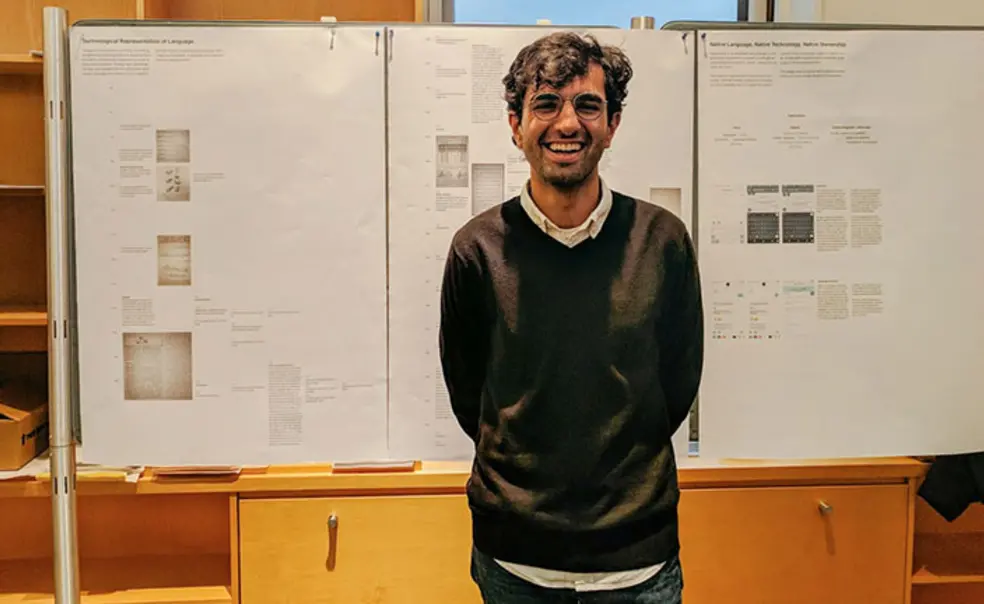Zeerak Ahmed ’13’s Urdu Keyboard Tackles a Tech Issue With Cultural Significance
After graduating from Harvard with a master’s in design engineering in 2018, Zeerak Ahmed ’13 didn’t stop working on his master’s thesis. Even after taking a job as a senior designer at Amazon, he’s continued his project to develop an functional Urdu keyboard.
While most who grow up in Pakistan speak a local language as their native tongue, Ahmed spoke Urdu during his childhood in Lahore. He hopes the keyboard can help better represent non-Western languages in technology.
When he began the project three years ago, Ahmed faced early challenges with displaying the keyboard properly: Urdu contains 39 letters written in Arabic script, making it difficult to fit on a smartphone screen designed for the 26-letter Roman alphabet.
“That gets fairly clunky pretty quickly,” he says. “We got the keyboards ready pretty quickly. The thing that got really hard is to get these layouts to work — the only way to get smartphone keyboards to work really is to have good autocorrect.”
While many everyday smartphone users view autocorrect as an occasionally annoying feature, Ahmed says it forms the basis of a solid keyboard. Because of the small size of smartphone keys, users often make mistakes when typing without even realizing they’ve done so. As a result, a functional keyboard needs to be able to predict the intended word.
“Basically you can expect that if you’re typing the wrong word, the keyboard has to be able to guess what the right word was,” he says.
Essentially, the keyboard has to “learn” a corpus of text so that it understands how the language functions. In addition to the challenge of keyboard design, Ahmed has also struggled to find Urdu text that can establish an accurate autocorrect, particularly with the large number of keys needed for an Urdu keyboard.
“In our case, we had to work with a lot of organizations to donate journal text to us. Most of these texts are written in this kind of archaic word-processing format,” he says, adding that they have chosen literary texts so they can build the autocorrect using linguistically correct samples. Once they perfect the feature, they hope to run distributed trials of the new keyboards.
Currently, Urdu speakers usually type with the Roman alphabet because Arabic script keyboards are cumbersome, so Ahmed’s project solves an important functional problem. But for him, creating a workable Urdu keyboard holds broader cultural significance.
“In very basic terms, it means that most people find it super hard to type in Urdu. So if they choose to type at all, they will type it in [Roman script],” he says. “So we are losing a large scriptural tradition.”
Beyond its functional purpose for Urdu speakers, Ahmed also believes the keyboard can help ensure that Urdu speakers will be, as he puts it, “fully represented in software.”
“If you want to get into the modern world and deal with technology, you have to learn to speak English and sort of deal with Western normality,” Ahmed says. He wants to “get people to believe that good design and good technology can come out of a very local sense or very Pakistani sense or South Asian sense of what people need.”












No responses yet